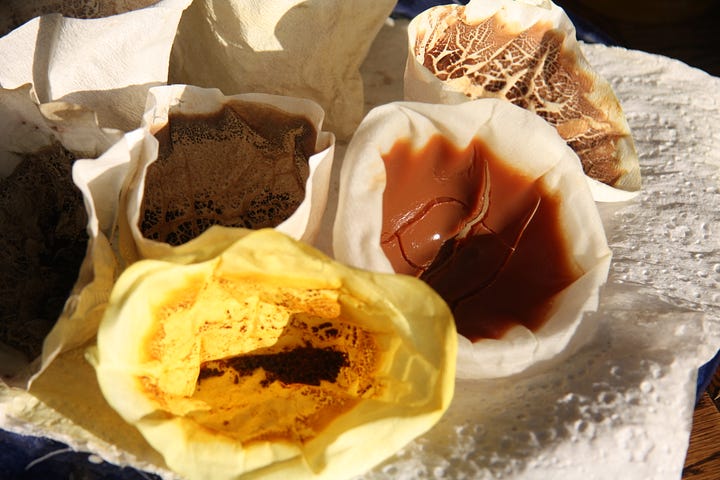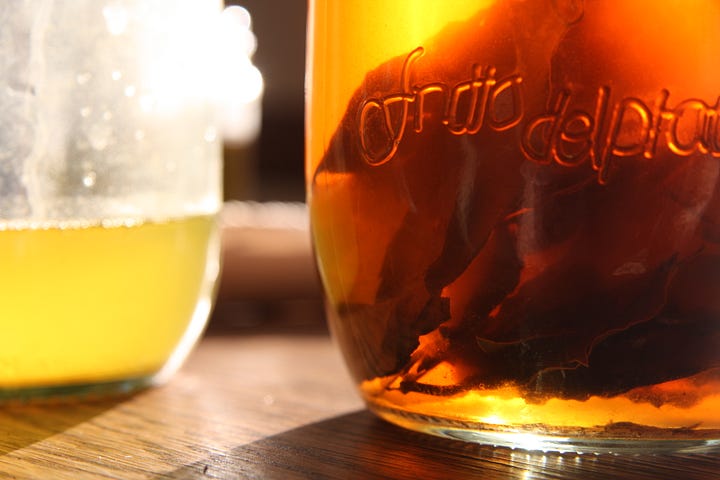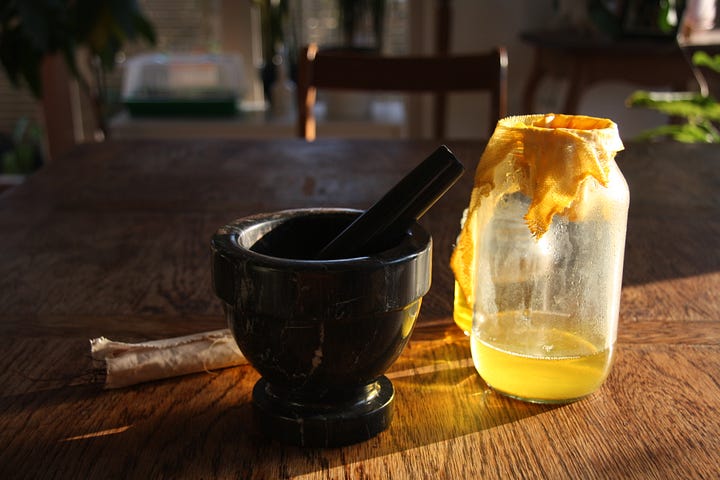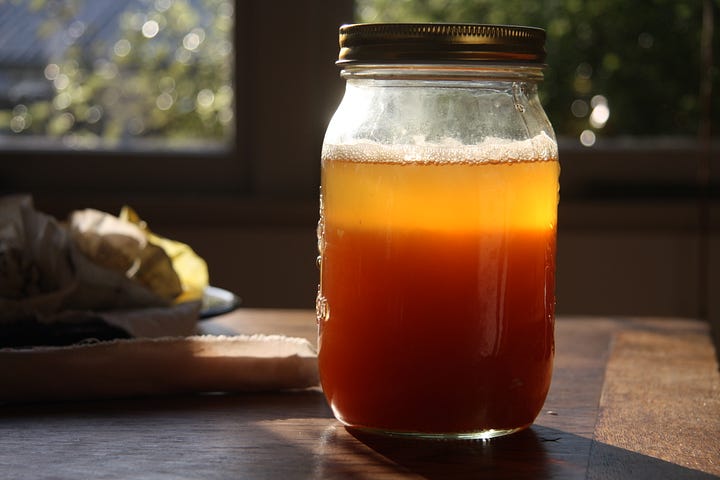Welcome to the inaugural Threefold Letter. As a monthly edition, it unfolds like a concertina book laying out three pages, each with something I’ve been thinking about, reading about, or something I’ve been working on.
---fold here---
Fungi
The largest organism in the world is a fungus. The Armillaria Ostoyae spreads across 965 hectares in Oregon, USA. Beneath our feet and through all the branches of our world are fungi spreading their spores, and conversing and forming connections beneath the earth. Over 150,000 species have been described with over 7,500 recorded in Aotearoa. They have an extraordinary array of forms and skills. And I’m smitten. A cluster of spores landed over me in the last few months setting off a fascination with fungi and their fruiting bodies: mushrooms.
It began with the development of a new character, a young girl who makes friends with amphibious creatures in the bog where she grew up. She is wan, long faced, and curious. However it happened, she and I jumped from frogs to fungi. And after that I started spotting them everywhere – including the spreading mould in the ceiling above my desk in our new rental - fungi filament fingers are pushing through and blossoming in the thin layer of paint.
I went looking for people’s thoughts on and experiences of mushrooms. I recommend Aliya Whiteley’s The Secret Life of Fungi for personal essays of experiences among mushrooms, and Robert Vennell’s new The Forgotten Forest for a closely guided tour of New Zealand’s fascinating fungi and their intimate relationship with other plants and animals (such as the beautiful symbiosis of lichen).
This new interest in mushrooms refracts through memory and I realise fungi and their mycelial networks have spread throughout my life, under the surface, throwing up their fruiting bodies, hare’s foot ink-caps, bombastic, sudden, simultaneously transient and ever-present. Much like all of my interests and fruitful hobbies!
Amanita, by Richard Kearney, Waitakaruru Arboretum, Kirikiriroa, 2022.
Whiteley, Aliya. The Secret Life of Fungi. Elliot and Thompson, 2020.
Vennell, Robert. The Forgotten Forest. HarperCollins, 2023.
---fold here---
Botanical pigments
I’ve generally stuck with black ink. The depth of it, unfussy, utilitarian. Its shades are beautiful conveying the breath beneath, te hau, life, a sigh, a gasp, a slow inhalation, a deep intake, a slow release, expiration, inspiration. I never felt wanting for colour – though I did try it and felt generally disappointed. The green was too sharp, and one dimensional, the orange too unnatural.
The tube was the wrong place to go looking for colour. Especially as I print with plants already. Untapped. I have begun making my own botanical pigments. It’s not a quick process. The better time I take the more I get to know the pigment. I’ve learned a lot about acidity and alkalinity. And even better I am learning so much about plants. My experiments so far have included kale, tanekaha, gorse, cabbage, and most recently, pigments still drying include mint, dandelion, rewarewa, and sage.




---fold here---
Out in the world
The Angela Morton Room, Te Pataka Toi, an art treasure trove in the Takapuna Library, is home to a couple of my books, as well as an artist file. the creation of new, contemporary files, is becoming rare. The Angela Morton Room has closed the creation of new files. Artist files are home to ephemera, and much ephemera these days is digital, bringing a new intensity to their transience.
Nonetheless, there is a file there for me, and I’m intent on filling it. For a recent pen pal project with the Print Council of Aotearoa New Zealand, I created three print pieces that were sent to my assigned pen pals. The first was to be a postcard, and the size and materials etc could develop from there. For each of these prints, I made an extra one for the Angela Morton Room.
Leanne Radojkovich, the incredible, indelible curator of the Angela Morton Room and its wonderful Instagram page (@angelamorton.room), recently wrote an insightful blog post about the artist files in the collection and curated an exhibition of the files. I am honoured to have some of my prints featured. Check out Leanne’s blog post here.
And visit the Angela Morton Room to see the exhibition on until the 12th January 2024.




